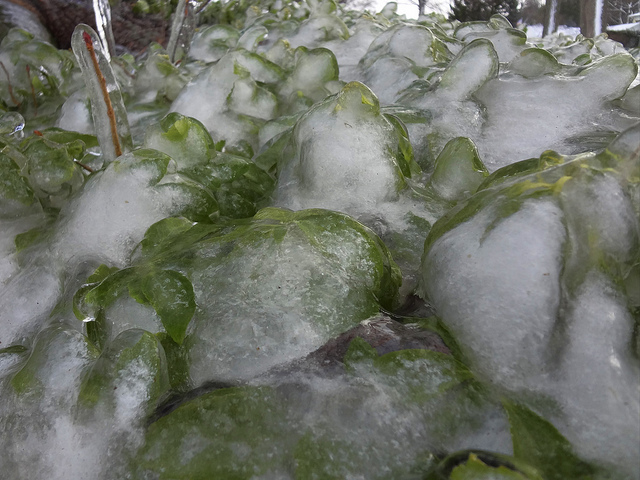Autumn is a beautiful time of year when trees come alive with color, yet outbreaks of sub-freezing temperatures pose a hazard to outdoor plants.
Many plants are very susceptible to damage from cold temperatures and frost. Other plants are hardier and can tolerate cold snaps.
Why are plants susceptible to cold temperatures? Water exists within every plant, from the root to the tip. If the temperature is 28 degrees (or lower)
for several consecutive hours, the water in that plant will turn into ice. This will serve to dehydrate the plant, damaging both its interior and exterior.

Citrus fruits are very vulnerable to freezing temperatures, as are most berries, lettuce, okra, peaches and tomatoes.
Flowers including begonia, marigold, and members of the Zinnia and Impatiens families should also be protected. More tolerant vegetation includes apples,
cranberries, grapes, peas, spinach, petunia, and verbena. The hardiest plants include beets, dates, turnips, pansy, primrose, and violet.
How do I protect my plants?
Use pots which can be moved inside during cold snaps or other hazardous weather.
Water the soil thoroughly (except around succulents). Wet soil holds heat better than dry soil, protecting roots and warming air near the soil.
Bedsheets, drop cloths, blankets and non woven sheets make suitable covers for vulnerable plants. Use stakes to keep material,
from touching foliage. Covering your plants will trap the heat underneath, allowing for any vegetation to stay safely warm!
Remember to remove the coverings when temperatures rise the next day.

For a short cold period, low plantings can be covered with mulch, such as straw or leaf mold. Remove once the danger of frost has passed.
Place a 100-watt lamp designed for outdoor use in the interior of a small tree. It can emit enough warmth to reduce frost damage.
Holiday lights (not the LED type) serve a similar function, but be sure they don’t touch any covering materials.
Spray an anti-transpirant, available at your local nursery, on the foliage of cold-sensitive plants to seal in moisture.
One application can protect up to three months by coating the leaves with an invisible polymer film.
Cluster container plants close together and, if possible, in a sheltered spot close to the house.
Don’t overreact to plant damage! Plants can be remarkably resilient. If you see signs of frost damage, don’t prune off the affected parts or dig up the plant immediately (especially true for palms).
Wait ’til March (when the weather warms up) to see whether new leaves sprout. If you see healthy new growth at the base of the plant, you can prune off the damaged parts.
If no regrowth is seen, remove the dead specimen and replace it with a more cold-tolerant species.





